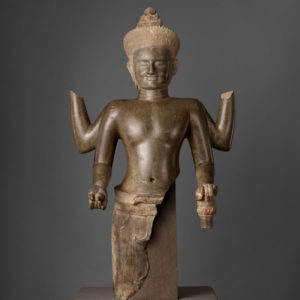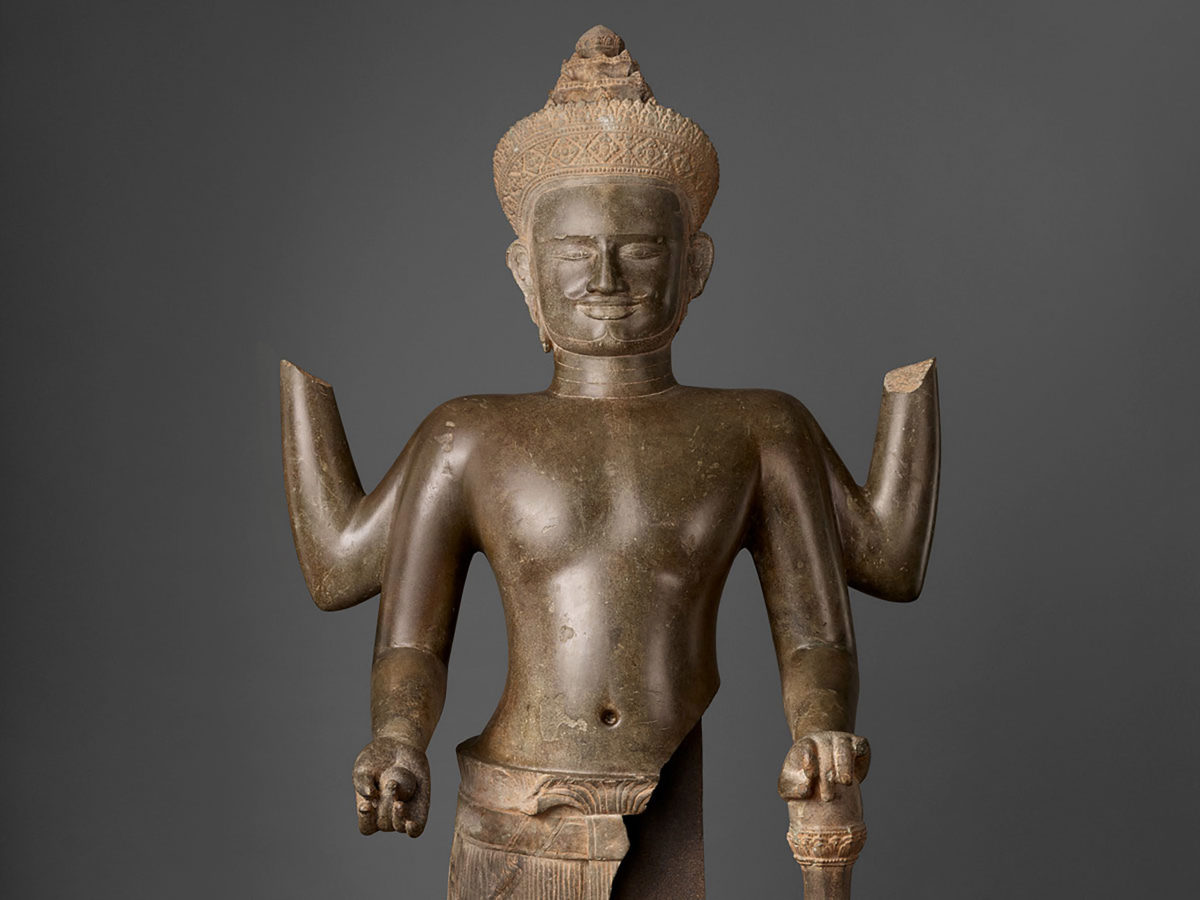An imposing and meticulously crafted image of Vishnu, a Hindu deity associated with powerful kingship.

The Hindu deity Vishnu
940–965
Cambodia; former kingdom of Angkor
Sandstone
The Avery Brundage Collection, B65S7
Vishnu was associated with powerful, righteous kingship both in India and in Southeast Asian realms such as the great empire of Angkor. Such an impressive image as this would have been commissioned from the royal workshop and enshrined in a temple under court patronage.

This sculpture can be identified as Vishnu by its crown, its four arms, and the remains of the attributes it carried. In its surviving right hand is a round shape representing the earth; its left hand rests on the handle of a club symbolizing might in battle, the shaft of which has broken away. The missing attributes — the war discus, associated with the sun, and the conch shell, associated with the world’s waters — would have emphasized how Vishnu encompasses fundamental natural forces.
Vishnu (together with one of his incarnations, the princely hero Rama) was often associated both in India and Southeast Asia with powerful, righteous kingship. Such a large, imposing, and meticulously crafted image as this would have been commissioned from the royal workshop and would have been enshrined in a temple under court patronage, though we do not know which. Two centuries later, a king of Angkor who associated himself with Vishnu built the world’s largest temple dedicated to Vishnu, the monumental Angkor Wat.
Watch a video about the temples at Angkor.
Watch a virtual day in the life of medieval Angkor Wat in this video from Monash SensiLab at Monash University in Australia.